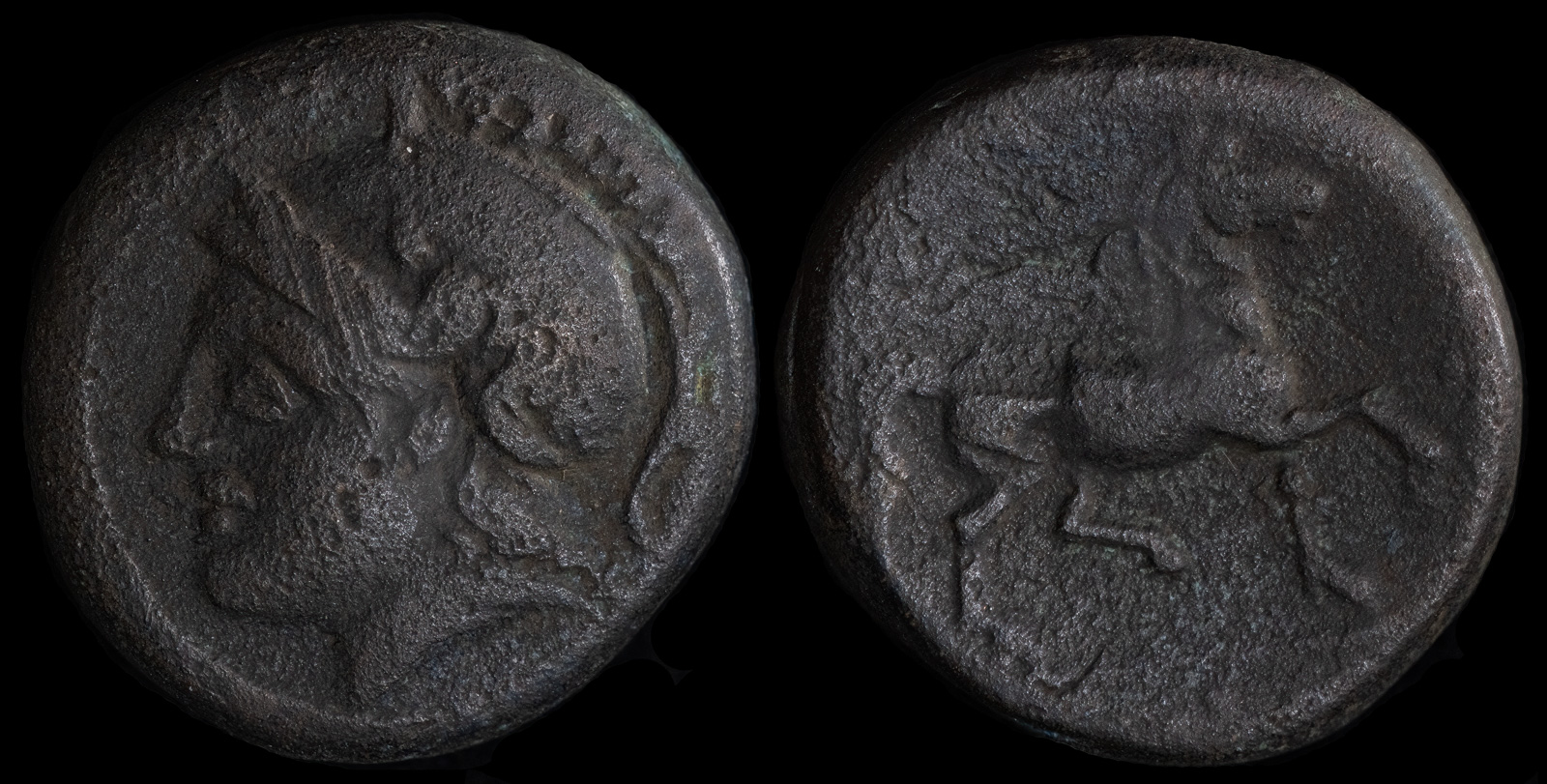
circa 325-300 BCE
Æ 15 mm, 4,60 g
Helmeted head of Ares left
ΦΑΛΑNNΑΙΩΝ, horse prancing right
Papaevangelou-Genakos 10; Rogers –; BCD Thessaly I 1257; BCD Thessaly II 576; HGC 4, 172
Phalanna was a city of the Perrhaboi and may solve my question of why the Perhhaboi had so few coins despite being so powerful. Perhaps that coinage was also minted in Phalanna, or perhaps the Perrhaboi coinage was intended to be more regional.

Mid-late 4th century BCE
Ae Chalkous 14.8mm, 4.4gms
Obv: PELORES; head of Zeus Peloris right
Rev: FALLA-NN; The nymph Phalanna seated right on chair, feeding stork to right
BCD Thessaly II 574
Ex-BCD Collection
Regardless, the coinage of Phalanna is vast and varied. There are some collectors who strive to gather all the possible variants, but in truth no one has been able to order it within any sense. While there are some issues labeled as belonging to certain battles and moments, the truth is we can only guess at exact dates so instead the coinage must be given date ranges.
To me, the issues of Phalanna are among the most fascinating of ancient Greece, and in the future I hope to add more. What makes it even more peculiar is that the city isn’t oftened mentioned in ancient sources.

circa 350 BCE
AE 2.63g 14mm
Obv: Laureate head of Apollo to right.
Rev: ΦΑΛΑΝ Head of nymph right, with hair in sakkos.
BCD Thessaly II 575.2.
Ex Nomos
Strabo suggests the possibility that Orthe was the acropolis of Phalanna, though most scholars today consider them different cities.
Per legend, the city received its name from a daughter of Tyro, who was a princess of Elis.

circa 400-250 BCE
Æ 18mm, 6,52g
Young head of male (Ares?) right /
Head of nymph right, hair in sakkos, within incuse circle.